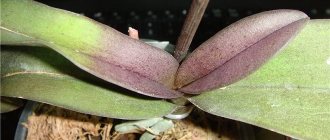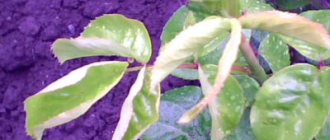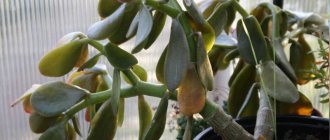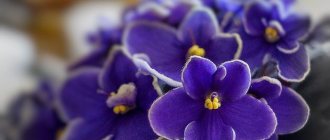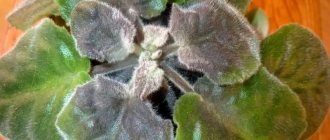For spicy lovers, this bright decorative pepper becomes an invaluable indoor plant, because it is beautiful and very hot. But this vegetable has a certain peculiarity in its behavior: at the slightest stress it pretends to be dead, and there are enough reasons why the flame pepper sheds its leaves.
It’s worth noting right away that lights are perennial plants that bring a generous harvest, and with proper care, this bright bush will delight you with fruits for quite a long time.
Light peppers are usually planted in February. And after six months the bushes bear their first fruits. In open ground, this pepper variety can grow up to 1 meter in height.
House bushes grown in a window are very compact and do not exceed 30 cm. However, during the fruiting period, this entire small bush is literally strewn with fruits.
What is the danger of pepper seedlings falling leaves?
Leaves are not decoration, but the most important organ through which the process of photosynthesis and nutrition of the plant takes place. The loss of leaves leads to disruption of biochemical processes and rapid weakening of the plant organism.
Falling leaves at the seedling stage is dangerous in the short and long term because:
- leafless pepper seedlings risk dying;
- Even having avoided death and returned to growth, the seedlings become less viable and less productive in the future.
Watering mode for hot pepper
Lack of moisture is another reason why the leaves of peppercorns dry out. In summer, when the air itself is dry, it is necessary to provide not only sufficient watering for the plant, but also the necessary air humidity.
For indoor plants, the winter heating season is also stressful. Pots are usually placed on the windows, under which the batteries are located.
Dry warm air rises, drying out the soil and foliage of the pepper. Therefore, it is better to cover the battery with damp towels. When water evaporates, the air in the room will be humidified. And the fabric will protect the flower from direct heat flows.
Causes of falling and solution to the problem
Pepper seedlings are demanding and capricious, so there are many reasons why “leaf fall” may begin. Basically, they are all associated with violation of growing conditions and agrotechnical errors.
Bad light
Lighting errors can occur in any place - both on window sills and in specialized greenhouses. The main problem is the lack of light, which light-loving peppers have a very high need for.
Favorable light conditions for pepper:
- at least 12 hours of daylight;
- diffused type of lighting.
If the pepper lacks light, it begins to shed its leaves. In addition, plants stretch, their trunks become thin and fragile.
Measures to prevent lack of light:
- turning on phytolamps with a power of 40-80 W (lamps are placed 8-10 cm above the plants);
- planting seeds in accordance with the scheme, maintaining intervals of 1-1.5 cm between neighboring plants, otherwise the plantings will be thickened;
- Instead of phytolamps, you can use natural lighting, placing boxes with seedlings on the sunniest balconies and window sills.
If the seedlings are positioned in such a way that direct sunlight falls on them, they must be shaded periodically - from 11 a.m. to 2 p.m. Otherwise, the leaves will get sunburned.
Incorrect soil composition
Pepper seedlings cannot be grown in ordinary soil; a special substrate is prepared or purchased for it.
Optimal composition:
- humus - 2 parts;
- calcined earth - 1 part;
- sand - 1 part.
The soil must have neutral acidity. If the soil is acidic, you need to add dolomite flour - 200 g per 1 square meter. m.
Fertilizer shortage
Insufficiently nutritious soil is one of the most common causes of leaf falling. Sowing is done in fertile soil, purchased or prepared independently. At first, the seedlings grow quickly, but over time the soil becomes depleted and the plants experience a lack of nutrition.
If the leaves turn yellow and fall off, the pepper seedlings are most likely lacking nitrogen. In order to develop fully, the upper part of the plant takes nutrition from the lower leaves, because of this they gradually die off.
How to eliminate nutritional deficiencies:
- If the leaves are yellow. Feed the seedlings with fertilizers containing nitrogen - you can use urea or saltpeter (20 g per 1 sq. m).
- If the leaves have turned yellow, but the veins remain green. This means there is not enough calcium. Apply any complex fertilizer according to the instructions.
Feed the seedlings at the root, and only on damp soil, so as not to burn the tender roots of the plants. Do not water the peppers for the next couple of days, otherwise the water will wash the nutrients through the drainage holes.
Wrong choice of container
To prevent leaves from falling off, seedlings should grow in containers measuring 8x12-15 cm (height x diameter). If this rule is violated, plus if the plantings are dense, the roots of the plants become intertwined and the growth of young plants is inhibited.
Wrong pick
Picking involves replanting plants by pinching the roots, which is a significant stress for them. It is important to move the seedlings carefully, otherwise one of the reactions to it will be the dropping of leaves.
How to prevent leaves from falling:
- immediately sow pepper seedlings in separate containers so as not to replant;
- it is best to sow peppers in peat pots, then the seedlings will not have to be removed from the containers at all, even when transplanted to a permanent place;
- if sowing is done in a common container, observe the intervals provided for by agricultural technology, otherwise the roots of the plants will intertwine and tear when picking;
- For 3-4 days after transplanting into new containers, the seedlings are kept in a dark place; if you place them in the sun, the leaves will begin to dry out and fall off.
Low temperature
Pepper comes from warm countries, so it is very heat-loving. Cannot tolerate cold and drafts. For normal growth and development, it needs a daytime temperature in the range of +22...+25°C, and a nighttime temperature not lower than +14°C.
Cold weather causes seedlings to weaken and lose their ability to extract nutrients from the soil. The only tool for obtaining the latter are leaves. Experiencing critical overload, the pepper foliage gradually turns yellow and falls off.
It is important to maintain the temperature in the greenhouse or other room in which the seedlings are growing within the established limits. After planting seedlings in closed ground, if the need arises, it is recommended to turn on the heaters.
Improper watering
Pepper loves not only light and warmth, but also watering. It reacts equally negatively to both waterlogging and moisture deficiency. The leaves of the plants wither, become soft and drooping, and after a while they turn yellow and fall off.
Pepper has a shallow but branched root system, so the plant takes water mainly from the top layer of soil. It is recommended to water this crop frequently and abundantly.
How to properly water pepper seedlings:
- the water should stand for two days;
- water temperature for irrigation - +20....+22°C;
- Containers must have drainage holes to ensure the drainage of excess water;
- watering is carried out only after the soil has dried by 2 cm, no less;
- It is advisable to water in the morning;
- water is poured directly under the roots so that it does not fall on the leaves - otherwise sunburn may occur.
If you pour cold water over the pepper, the temperature in the container will change sharply, and the roots will lose their ability to “drink.” Because of this, watered plants will need water, despite the moist soil.
Crop rotation violation
“Leaf fall” in seedlings can be observed due to violation of crop rotation rules. There are crops after which pepper cannot be grown. Inexperienced gardeners often make a grave mistake - they take garden soil from an area where crops unfavorable for peppers grew and forget to treat it before sowing.
Unfavorable predecessors for pepper are all nightshade crops - potatoes, eggplants, tomatoes.
Diseases and pests
Falling leaves on seedlings can be caused by certain diseases and pests. Such cases are the most dangerous, since the loss of leaves occurs after a long and destructive impact of negative factors.
Causes of leaf falling:
- Spider mite. Small sucking insects that settle on the underside of leaves. Damaged leaves curl and fall. To combat ticks, use “Akarin” or “Fitoverm”, in accordance with the dosage specified by the manufacturer. If the case is not advanced, you can limit yourself to a soap solution - a piece of grated soap in 10 liters of water. In particularly advanced cases, it is recommended to spray the seedlings with Actellik.
- Aphid. Settles on all above-ground parts of the plant. The leaves become pale yellow and gradually fall off the seedlings. It is recommended to spray the seedlings with tincture of tobacco dust - dilute 500 g in 10 liters of water and leave for 24 hours. Then add 50 g of laundry soap. Wood ash will also be used instead of tobacco.
- Fusarium wilt. This is a common disease among nightshade crops. Causes rapid yellowing and falling of leaves. The causative agent is a fungus, which makes no sense to fight at the stage of growing seedlings. If bright yellow leaves appear on the seedlings, they need to be torn out and destroyed, and the entire soil should be calcined or disinfected with a solution of Fundazol.
- Stolbur is a pathological condition caused by microscopic midges that drink juices from leaves and other parts of plants. Seedlings slow down, their foliage turns yellow and subsequently falls off. They fight the problem with chemicals. Even before flowering, all seedlings must be treated with insecticides - “Aktara”, “Inta Vir”, “Aktellik”, “Confidor” or their analogues.
- Late blight . The disease often affects young plants. Before falling, it causes characteristic spots on the leaves - dark and dense. The problem is dealt with using the drugs “Barrier” or “Barrier”. They are also recommended for use in cases of blackleg. This disease, common in seedlings, is easily recognized by the dark ring at the base of the stem.
Other vegetable diseases, such as powdery mildew, can also cause leaf loss. Having discovered signs of a particular disease, you must immediately take measures to treat or destroy the seedlings - if the pathology is incurable.
Feeding peppers
During the entire gardening season, crops require a huge amount of nutrients. However, fertilizing should always be done in accordance with the instructions.
It is important not to overfeed the bushes, otherwise eating their fruits will be harmful
You can independently determine what substance the plant lacks, because when a plant lacks something, it takes everything it needs to the detriment of the fruit.
- leaves fall, turn yellow and blue - there is not enough nitrogen;
- the leaves turn yellow at the edges, curl into a tube, dry out; feed with potassium;
- lightening of the leaves, appearance of veins - magnesium is needed;
- chlorosis (impaired photosynthesis) means a lack of iron and copper.
Use fertilizers strictly according to the instructions, do not exceed the dose, otherwise you can cause irreparable harm to the plants.
Typical mistakes depending on the growing method
The fall of leaves on seedlings largely depends on the conditions in which it has to grow. Each place - apartments, greenhouses, balconies and verandas - has its own factors that provoke the loss of green mass.
In greenhouses
Greenhouses and greenhouses have a special atmosphere - it is humid and hot, the air is stale and there is not enough oxygen. Such conditions can negatively affect the condition of the seedlings.
Reasons for the fall of cotyledon leaves in greenhouse conditions:
- fungal diseases;
- poor quality ventilation;
- drafts;
- thickened plantings.
To reduce problems when growing pepper seedlings in greenhouses, it is recommended to choose varieties that are resistant to unfavorable growing conditions. Experts advise paying attention to the varieties Bogatyr, Agapovsky and Apricot favorite.
In the open ground
The seedlings are planted in the ground at a certain time, and at this stage it is extremely important to avoid mistakes that can lead to poor establishment and loss of leaves. Once in a new place, seedlings can be attacked by pests, freeze, or suffer from the scorching sun.
Negative factors:
- poor quality material;
- the wrong place for planting seedlings was chosen;
- poorly fertilized and improperly prepared land.
It is also recommended to implement preventive measures to prevent diseases and pest attacks from the first days of transplanting seedlings.
Pests
Spider mites, mealybugs, and whiteflies love to feast on the juice of the tender greenery of young vegetable bushes. Dry hot air is a favorable environment for these pests.
Do not wait for the presence of parasites to become apparent: the seedlings look sickly, untidy, and dry out. Every time you go to water or loosen, inspect the leaves on both sides. And even better - for prevention, treat with Fitoverm, which will cope with both ticks and insects. Repeated spraying - a week before planting in the garden.
Instead of a conclusion. If the seedlings are luxurious, live in excellent conditions, there are no traces of pests, but suddenly the cotyledons turn yellow and fall off, do not panic. The peppers have matured and shed unnecessary leaves.
Why do leaves fall when planting seedlings in a permanent place?
Especially often, wilting and falling off of the green mass is observed when transplanting seedlings. If the seedlings are not grown in peat tablets, first water them and then carefully remove them from the containers. Plant plants together with a lump of earth using the transshipment method.
Possible causes of the problem:
- damage to small roots;
- planting too deep;
- different soil composition.
After transplantation, seedlings often slow down their growth, their lower leaves droop and often fall off. This situation at the initial stage is not critical - the plants simply adapt to new conditions, shed “ballast”, directing all their forces to take root.
After 3-4 days, the root system is completely restored, the seedlings get used to the new place and the falling of leaves stops. As soon as the pepper begins to grow new leaves, rest assured that it has taken root successfully. Simultaneously with the growth of green mass, buds begin to form.
If after 3-5 days recovery has not occurred, most likely an error was made during planting, or there is not enough fertilizer in the soil.
Landing conditions violated
At the sowing stage they make mistakes due to inexperience. The main reasons for future problems with pepper seedlings are:
- incorrectly selected planting mixture;
- violation of sowing technology.
When preparing the substrate for pepper seeds, the following prerequisites are taken into account:
- If you use garden soil for soil mixture (and some of the garden soil is useful for quick adaptation to the garden after replanting), then it is taken taking into account crop rotation, but it must be processed. Details about the composition and preparation of the mixture for peppers are written in this article.
- Pepper seeds are placed in the ground so that the seedlings do not form a dense wall. Each sweet pepper has free space.
Otherwise, the sprouts stretch out, competing for space and light, and crush each other. Those that are weaker grow sluggish, thin, and more often die before reaching the pick.
Dense sowing is the reason why the gardener loses some of the seedlings when planting peppers. The delicate root system suffers from any disturbance - when diving, they try to preserve the earthen lump.
What measures should be taken to save seedlings?
If you see that pepper seedlings are losing their leaves, it is important to find out the reasons for this phenomenon as soon as possible and take all possible measures to eliminate them.
What to do first to save seedlings:
- Treat all plants. Both healthy and with falling leaves, using the Zircon preparation.
- Check for drafts in the room or greenhouse. And eliminate them when found.
- Find out the reason for the leaves falling. Check the temperature, air and soil humidity. Take measures to eliminate unfavorable conditions - adjust temperature, humidity and lighting.
- Pay attention to the appearance of the plants. Perhaps they are affected by some disease. Based on the symptoms, make a diagnosis and take measures to eliminate the disease. Spray the seedlings with a fungicide or a homemade solution, depending on the type of disease. At the same time, treat the soil itself with fungicidal preparations.
- Analyze the possibility of nutrient deficiencies. If all other reasons for leaf falling are excluded, the plants most likely need fertilizer. Determine by external signs which element they lack and apply the appropriate fertilizer.
What to do to save the harvest
To obtain a good harvest of peppers, it is necessary to meet their needs for nutrition, lighting, temperature and humidity, and be able to correct the excess or deficiency of these factors in a greenhouse climate.
Organizing proper care and correcting agrotechnical errors
There are proven techniques that can be used to correct undesirable natural or agrotechnical factors in the place where peppers are grown.
Providing lighting and heat:
- The planting method (row or checkerboard) ensures the optimal density and light requirement of peppers. Most often this is a planting pattern of 30x30 cm or 40x60 cm, depending on the variety;
- when hot weather sets in, different options for shading and ventilation are used, taking into account the intensity of solar radiation, night and day temperatures;
- During prolonged cloudy and rainy weather, additional lighting devices - phytolamps - are installed in greenhouses.
Ensuring optimal humidity:
- the frequency of watering peppers on hot days is once a week, but abundantly, after which the soil must be loosened;
- during prolonged dry weather, to ensure suitable humidity in the greenhouse, water spraying devices are installed or paths between the beds are watered daily;
- mulching the soil also protects it from drying out and overheating;
- in the morning (to avoid sunburn), the plants are sprayed or watered from a watering can over the leaves.
Adding nutrients:
- the need to apply fertilizers is assessed based on the condition of the bushes. The optimal feeding regime is once every two weeks, alternating organic and mineral compositions;
- during the period of budding, pepper requires mainly nitrogen fertilizers, during the period of formation and ripening of fruits - phosphorus and potassium;
- if, with abundant healthy foliage, the pepper begins to shed its ovaries, stop feeding for two weeks;
- For effective absorption of nutrients, plants are provided with optimal temperature and light conditions.
Pest Control
Pest and disease control is carried out not only to prevent the falling of flowers and ovaries, but in general to preserve healthy plants.
For this, there are various chemical and biological preparations: “Kleschevit” - against spider mites, “Aktara”, “Aktellik” - against whiteflies, and others.
Most often, gardeners use more environmentally friendly methods: spraying with infusions of garlic, yarrow, chamomile, and laundry soap.
Stimulation of pollination
Pepper is a self-pollinating crop, but sometimes it needs help. In order for full-fledged ovaries to form, it is recommended to stimulate pollination by periodically gently shaking the bushes in the greenhouse. You can transfer pollen from one plant to another using a cotton swab or brush.
The most suitable temperature for stimulating pollination is +23-25°C.
Preventive actions
Measures aimed at preventing leaf loss are considered more effective, rather than actions taken after the problem occurs. Even if it is possible to correct the situation by curing the seedlings or eliminating the causes of the pathology, it will still weaken and be delayed in development.
Measures to prevent leaf drop in pepper seedlings:
- Hardening. In the last 7-10 days, harden off the seedlings regularly. Take it out to the balcony or outside every day. In the greenhouse, lower the temperature for a short time, but only without creating drafts. Carry out the hardening in an increasing manner - starting with 10-20 minutes, increase the time spent outside to several hours.
- Lighting. Purchase phytolamps in advance and hang them correctly in the places where the seedlings are placed. Think about which windows the containers with seedlings will be placed on, and where you will place them after picking.
- Crop rotation. If the seedlings are growing in a greenhouse, do not grow them in the soil after the nightshades. Be sure to change or disinfect the soil with antifungal agents. Preferably throughout the greenhouse.
- Fertilizers. Don't wait until the leaves fall to feed your seedlings. Follow the feeding schedule and closely monitor the condition of the seedlings.
Advice from experienced gardeners
Growing pepper seedlings cannot be called too difficult. Pepper does not require anything special compared to tomatoes or any other nightshade crop. But it’s worth listening to the advice of experienced gardeners who have been growing peppers for many years.
Helpful Tips:
- Buy seeds only from reliable suppliers. Contact specialized agricultural stores and buy seed material from well-known and trusted manufacturers. All of them are well known to gardeners. And if you are new to gardening, find out in advance which companies’ seeds are in demand.
- Plant only disinfected seeds. If they are treated by the manufacturer, plant them in the ground immediately. And if the seeds are not pickled, or you use self-collection, be sure to disinfect them. To do this, use a solution of potassium permanganate - 1 g of powder per 1 liter of warm water.
- Ventilate the greenhouse every day. Otherwise, there will be a high risk of not only falling leaves, but also the death of seedlings. In stale and humid air, mold and fungi multiply especially actively.
- Give preference to “resistant” varieties. Resistant to diseases and pests, easily withstanding climate challenges, and zoned in your region.
The most difficult moment in the case of pepper seedlings falling leaves is determining the cause of this phenomenon. Once it becomes clear why the plants are losing their leaves, all that remains is to eliminate the source of trouble through drugs or by adjusting the growing conditions.
The best varieties of hot peppers for growing on a windowsill
All the varieties of hot peppers presented below can bear fruit at home for several years (from 4 to 6). The use of fruits is universal:
- they are consumed fresh, and also as a seasoning and for making pepper powder;
- used for canning and pickling vegetables;
- used for medicinal purposes.
The practical use of hot pepper is ideally combined with the decorative nature of the crop: the plant serves as a decoration for any interior.
Table: the best varieties of hot peppers for growing in an apartment
- Round;
- spreading;
- heavily leafy;
- up to 35 cm high
- Round;
- medium leafy;
- up to 25 cm high
- Round;
- semi-spreading;
- heavily leafy;
- up to 30 cm high
Up to 120 fruits are formed on one bush


